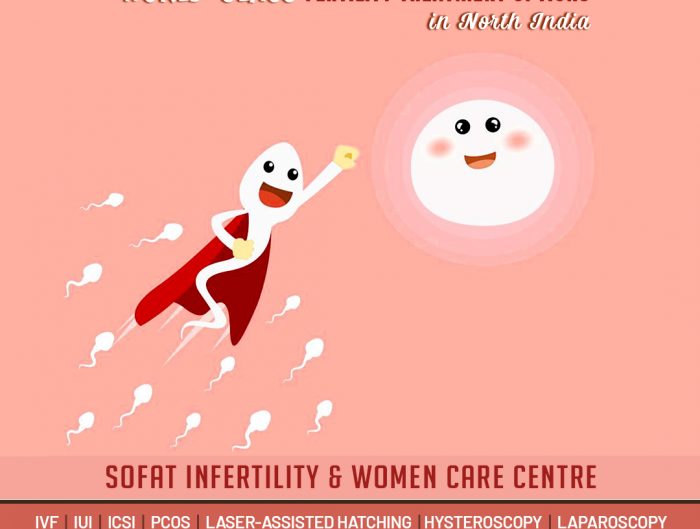In-vitro fertilization (IVF) transformed infertility care by giving couples a realistic shot at pregnancy when other options fall short. Yet, even with cutting-edge labs, some patients still struggle to carry a pregnancy to term. One persistent hurdle is the embryo’s ability to nestle into the uterine wall, a process called implantation. To tackle this, many reproductive endocrinologists are now adding an innovative tweak known as Laser-Assisted Hatching (LAH) to their standard IVF protocols.
LAH appears especially helpful for people who have endured multiple failed cycles or who carry conditions such as thin embryos, older maternal age, or thick zona pellucida that jeopardize natural hatching. But what exactly happens in the lab, and how does a quick laser pulse translate into better odds-at-home pregnancy tests? In the sections that follow, we break down the underlying mechanics of laser hatching, its impact on cold success statistics, and the specific groups most likely to reap its reward.
What is Laser-Assisted Hatching?
Laser-assisted hatching is a specialized procedure used during in-vitro fertilization (IVF) to improve the odds that an embryo will attach to the uterine wall. In this technique, a targeted laser beam makes a tiny slit in the embryo’s outer protective shell, called the zona pellucida, before the embryo is placed in the womb. Under normal circumstances, the zona acts as a barrier that safely surrounds the developing embryo. Still, it must eventually rupture or hatch so the embryo can settle into the lining and grow.
Occasionally, the zona pellucida becomes unusually thick or tough, preventing even viable embryos from hatching at the right time. When that happens, good-quality embryos can fail to implant, which may turn an otherwise promising IVF cycle into a disappointment. By gently weakening the shell with the laser, doctors give the embryo a much easier exit and, therefore, a better chance of sticking in the uterus.
Because the work is done with a highly focused beam, the procedure is considered minimally invasive. The opening is usually created on day three or day five after fertilization, at a point when the embryo has either begun cell division or reached the blastocyst stage and is preparing to hatch.
Why Laser-Assisted Hatching Improves IVF Success Rates
Facilitates Embryo Hatching
Laser Assisted Hatching mainly helps embryos break free from their protective outer shell, the zona pellucida. In a typical IVF cycle, the embryo matures and hatches on its own before attaching to the uterus. Sometimes, though, that shell is unusually thick, making the hatch harder. When the embryo cannot escape, it may never implant, and the IVF attempt fails. By carefully scoring the zona with a focused laser beam, doctors create a tiny window that the embryo can use right away. This small step gives the embryo a clear exit, so it is much less likely to get stuck and much more likely to settle into the uterine lining. The result is a noticeable bump in the odds of a successful pregnancy, contributing to the increasing IVF success rate in India.
Overcomes Embryonic Stagnation
Embryo quality tends to drop as female fertility ages, and eggs from women over thirty-five or women facing health issues like lower ovarian reserve often develop more slowly. When embryos lag because they are weaker or because the shell is tough, experts call that embryonic stagnation. Laser Assisted Hatching can break that developmental gridlock by literally taking some of the strain off the embryo. With the small hatch already made, fragile embryos in challenging circumstances can switch from growing to sticking in a smoother, speedier way.
As women age, the outer coat of the egg zona pellucida frequently thickens and becomes less yielding. Laser Assisted Hatching uses a gentle laser to create a small opening in this protective shell, enabling the embryo to break out and begin the implantation process. By removing this mechanical barrier, LAH gives the developing embryo a better shot at latching onto the uterine lining, thereby raising the odds of a successful pregnancy.
Improves Outcomes for Poor Quality Embryos
Embryo quality is often the first thing couples consider when measuring the chances of success in an IVF cycle. Yet, even the finest-looking blastocysts can occasionally fail to hatch on their own. Other embryos, deemed suboptimal, may show abnormal cell division or uneven blastomeres yet still hold hidden potential if they can escape their outer layer. For patients who have endured several transfer attempts with embryos that passed standard grading but failed to implant, Laser Assisted Hatching offers renewed hope by giving those fragile embryos a nudge they may otherwise never get.
Supports Couples with Previous IVF Failures
Couples who have endured several unsuccessful IVF attempts often seek fresh strategies, and Laser Assisted Hatching (LAH) offers such an option. Many failed cycles stem from an embryo’s inability to break free from its protective shell before implanting. Even high-quality embryos can be held back if their zona pellucida is unexpectedly thick, which can block a promising pregnancy.
For these patients, LAH gently creates a small opening in that shell, giving the embryo a better shot at settling into the uterus. This step boosts implantation rates, allowing some couples to move past what felt like a dead end. In clinics using the technique, women with a history of failure now report stronger hopes for a viable pregnancy.
Lowers the Transfer of Extra Embryos
Traditionally, transferring several embryos has been an easy way to lift overall pregnancy odds. The downside, of course, is the risk of high-order multiples-twins, triplets, and more, which raises serious health concerns for mothers and babies alike. By improving the success rate of a single embryo transfer, Laser Assisted Hatching helps doctors offer patients a lower-risk path to parenthood.
Laser-assisted hatching can cut down the need for transferring several embryos by boosting the odds that a single embryo will implant successfully. When one embryo implants more reliably, patients face lower risks tied to multiple pregnancies, making LAH a safer and more efficient choice.
Enhances Success in Frozen Embryo Transfers.
This technique is often applied not only in fresh in vitro fertilization cycles but also in frozen-embryo transfer processes. During a fet, embryos that have been previously frozen are thawed and placed in the uterus, yet their outer membranes, zona pellucida, may end up thicker after freezing and thawing, which can hinder natural hatching.
By pre-treating these embryos with laser light, fertility specialists create a gradual opening in the zona and give the embryos a better chance to break out on their own. This step raises the odds that the embryo will implant during the soft window of the uterine lining and makes laH a helpful tool for patients returning for additional transfer cycles.
Who Can Benefit from Laser-Assisted Hatching?
Laser-assisted hatching is usually recommended for several specific patient groups:
Women Over 35: As a woman ages, both egg and embryo quality often decline, and the outer shell, the zona pellucida, may become harder. LAH uses a precise laser to thin this shell, making it easier for embryos to hatch and implant.
Patients with Recurrent IVF Failures: After several unsuccessful IVF cycles, clinicians explore subtle barriers to success; LAH offers mechanical assistance that, in some cases, tips the balance toward implantation.
Women with Diminished Ovarian Reserve: A low number of viable eggs makes every embryo precious. For these patients, especially when the embryos are of only moderate quality, LAH may enhance the odds that a given blastocyst will attach to the uterus.
Frozen Embryo Transfer Candidates: During freeze-thaw procedures, the zona can become tougher. By planning LAH for thawed blastocysts, the clinic aims to offset any extra difficulty the thicker shell creates.
Embryos with Thick Zona Pellucida: Pre-implantation measurements of the zona lend insight into each blastocyst. Laser hatching can be directed only at those with excessive thickness, offering a targeted solution rather than a blanket procedure.
What Are the Risks of Laser-Assisted Hatching?
Though Laser-Assisted Hatching is generally safe, no medical procedure is entirely risk-free. Among the possible concerns are the following:
Embryo Damage: The laser beam is intended to make a tiny slit in the zona pel-lucida, yet there remains a slight chance that surrounding tissue will be harmed and the embryo will be injured.
Over-Hatching: Rarely, a burn that is too deep can encourage the embryo to hatch too soon or too thoroughly, potentially hampering its ability to attach to the uterine wall.
Not Always Effective: Even after Laser-Assisted Hatching, an embryo may fail to implant if its basic quality is compromised, if the uterine environment is not optimal, or if other factors in the IVF cycle impede success.
Conclusion
Laser-assisted hatching remains a promising option for couples battling persistent implantation problems. By easing the natural hatching process, the technique raises the odds of embryos settling into the womb. It ultimately yields higher pregnancy rates for older patients, those experiencing repeated IVF setbacks, and individuals relying on thawed cryopreserved embryos. For the best IVF center in Udaipur, consult with experienced specialists who can guide you through the process and offer personalized treatment options.
Laser Assisted Hatching is not needed for every patient undergoing in vitro fertilization, but it can be a helpful option for individuals who have experienced repeated cycle failures. If you are contemplating IVF or if past attempts have been disappointing, speak with your fertility specialist to determine whether this technique might improve your chances of achieving a healthy pregnancy.
read about skin care



Leave A Reply